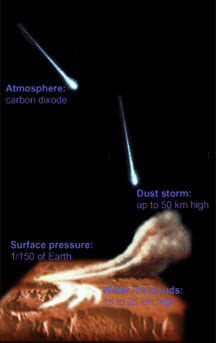This drawing shows that Mars has an atmosphere very different from the atmosphere on Earth.
Click on image for full size
Lower Atmosphere
The atmosphere of Mars is much thinner than that of Earth, with a surface
pressure averaging 1/100th that at the surface of the Earth. Surface
temperatures range from -113oC at the winter pole to 0oC on the dayside
during summer.
Although the length of the Martian day (24 hours and 37
minutes) and the tilt of its axis (25 degrees) are similar to those on Earth (24 hours and 23.5 degrees), the
orbit of the planet about the Sun affects the lengths of the
seasons the most. The atmosphere is composed mainly of carbon dioxide (95.3%),
nitrogen (2.7%), and argon (1.6%), with small amounts of other gases.
Oxygen, which is so important to us on earth, makes up only 0.13% of the
atmosphere at Mars. There is only one-fourth as much water vapor in the
atmosphere.
Although small, this is thought to be enough to allow water
ice to be frozen into the surface of the planet. With so little water, clouds are rarely seen in the Martian sky. The
possible role in the past of liquid water in forming the dry river
beds which we can see is still unknown, particularly because water ice is
not plentiful on the surface of the planet.
You might also be interested in:

How did life evolve on Earth? The answer to this question can help us understand our past and prepare for our future. Although evolution provides credible and reliable answers, polls show that many people turn away from science, seeking other explanations with which they are more comfortable.
...more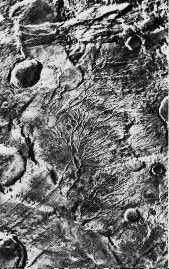
Mars doesn't seem to have very much water. If Mars had lots of water life could survive there. There seems to be *some* water because clouds, fog, and icy polar caps are seen on Mars today. There are also
...more
This is probably what happened to Mars: an early warm period the inside of Mars cools off very fast volcanoes appeared, and the Tharsis Bulge is created there are changes in climate every once and awhile,
...more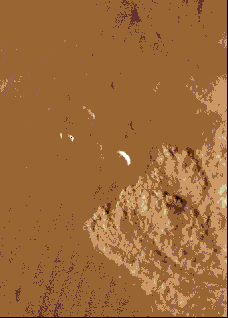
This image shows a local dust storm near the edge of the south polar cap. Viewing of this image at high resolution is recommended. This fascinating image shows dust swirling over a large area. Martian
...more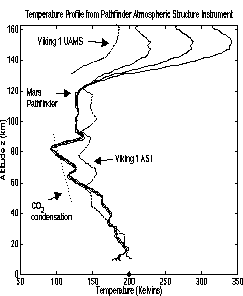
The temperatures in the atmosphere of Mars are doggone cold! This is a graph which shows just what the temperatures are. The measurements were taken by Mars Pathfinder as it decended through the nighttime
...more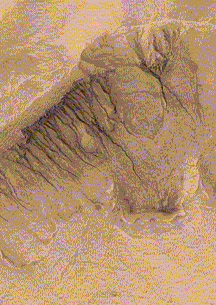
Take a look at some new pictures from Mars! More than 18,000 pictures, including this one, were just added to a big online photo album of pictures taken by the Mars Global Surveyor. This makes a total
...more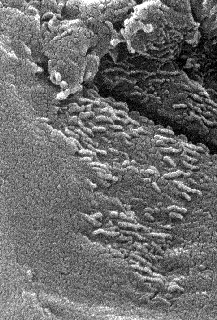
Researchers have found tiny critters that could live in environments like Mars. No, they are not Martians! They are a type of bacteria that lives here on Earth. These bacteria are very small, so they
...more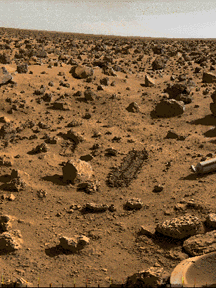
In spite of the fact that Mars has an atmosphere, the environment of Mars seems unfriendly toward life as we know it on earth. Mars has little atmosphere . This means that the temperature above the surface
...more


